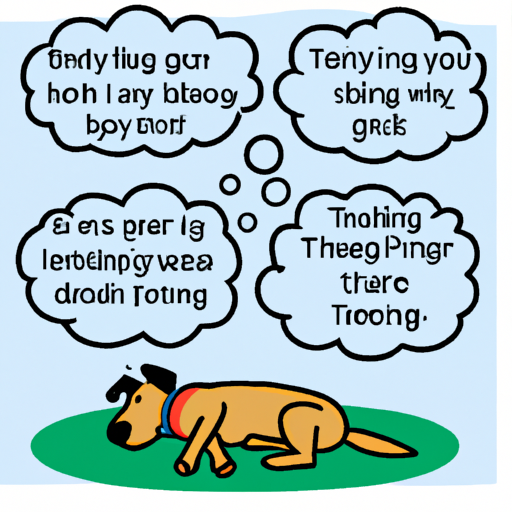As dog owners, we often find ourselves questioning the fascinating behaviors of our canine companions. One that may catch your eye and pique your curiosity is your dog’s tail wagging even while it seems to be sound asleep. You may wonder, why do dogs wag their tails when sleeping? Do they dream of chasing squirrels or is it a sign of discomfort? This comprehensive guide will delve into the reasons behind this intriguing behavior, offering a wealth of knowledge for every dog lover seeking to understand their pet better.
Table of Contents
1. Understanding the Language of Tail Wagging
2. Dreaming: A Peek Into a Dog’s Sleep World
3. Physical Conditions That May Cause Tail Wagging in Sleep
4. Tail Wagging as a Response to External Stimuli
5. When Should You Be Concerned?
6. Frequently Asked Questions
Key Takeaways
– Dogs communicate a variety of emotions, intentions, and responses through their tail movements.
– Dogs do dream and their dreams can cause physical responses, including tail wagging.
– Some physical conditions can cause involuntary tail wagging, even during sleep.
– External stimuli can trigger tail wagging in a sleeping dog.
– While tail wagging during sleep is usually harmless, it can sometimes indicate a problem that requires veterinary attention.
Understanding the Language of Tail Wagging
A dog’s tail is more than just a rudder for balance. It’s a significant part of their body language, expressing emotions and intentions. As explained on PetMD, the tail serves as a communication tool and its movements can denote a variety of emotions from happiness and excitement, to fear and aggression. Dogs even have a specific tail wag, known as the ‘flag tail’, for when they’re feeling particularly confident or dominant.
In their sleep, dogs might wag their tails as a response to what they’re experiencing in their dreams. This brings us to our next point, the fascinating world of canine dreams.
Dreaming: A Peek Into a Dog’s Sleep World
Like humans, dogs enter a REM (Rapid Eye Movement) stage during sleep, the phase in which dreams occur. Scientists believe that dogs do indeed dream, though the exact content remains a mystery. However, physical responses like paw twitching, whimpering, and tail wagging can often be observed. You can learn more about dog dreams on this page at OneTopDog.
Physical Conditions That May Cause Tail Wagging in Sleep
While dreaming is a common cause of tail wagging in sleep, there are also physical conditions that can result in this. For instance, dogs suffering from ‘Limber Tail’, an inflammation of the muscles at the base of the tail, might wag their tails unconsciously due to discomfort. Another condition is ‘Happy Tail Syndrome’, where dogs wag their tails so intensely they can cause injury, leading to involuntary tail movement. Detailed information about these conditions can be found here.
Tail Wagging as a Response to External Stimuli
Dogs are incredibly tuned into their environment, even while asleep. A sudden noise or smell can trigger tail wagging in sleep. The wagging might be a sign of alertness, or a response to something pleasant, like the scent of their favorite human approaching.
When Should You Be Concerned?
Generally, a wagging tail during sleep is not a cause for alarm. However, if you notice other signs of discomfort like restlessness, excessive whimpering, or if the tail wagging is accompanied by other unusual movements, it might be time to consult a vet. A more detailed guide on when to seek veterinary help can be found here.
Frequently Asked Questions
-
Do all dogs wag their tails when they sleep?
Not all dogs wag their tails in their sleep. It depends on the individual dog and what it is experiencing during sleep. -
Is tail wagging a sign of a good dream?
Not necessarily. Tail wagging can be a response to both positive and negative emotions, so it’s not a reliable indicator of the nature of the dog’s dream. -
Should I wake my dog if it’s wagging its tail in sleep?
Unless you suspect your dog is in distress or discomfort, it’s best to let sleeping dogs lie. -
Can tail wagging in sleep indicate a health problem?
In some cases, excessive or unusual tail movements can be a sign of a health issue. If you’re concerned, it’s best to consult a vet.
By understanding the reasons behind why dogs wag their tails even when sleeping, we can better connect with our canine companions. Such knowledge will not only satisfy your curiosity but also help you be more responsive to your dog’s needs and well-being.



